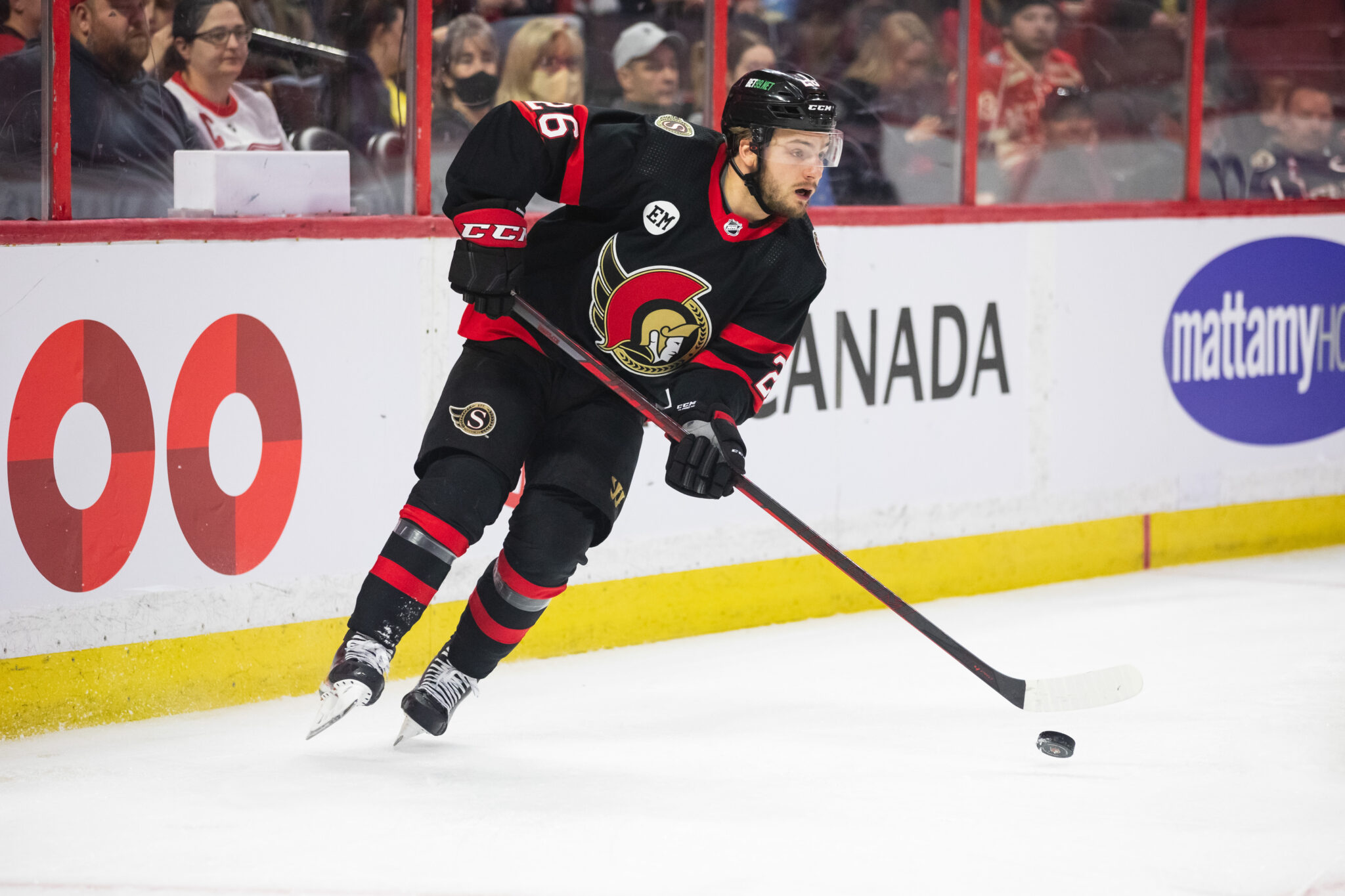In the final game before the NHL All-Star Break, Erik Brannstrom was only given 10:25 of ice time, and only 5:57 in the first two periods. This got some people wondering what the reason was, as nobody spotted a glaring issue or injury during the game, and it sparked conversation about how Brannstrom isn’t playing well enough, so I decided to look into it a bit deeper.

Brannstrom has averaged 15:06 of ice time this season. He is playing behind two fantastic left-handed defensemen in Thomas Chabot and Jake Sanderson, so it makes sense that he isn’t playing a ton of minutes, but his 679 total minutes ranks 162 of 189 defensemen to play 25 games or more. He is clearly playing far below the league average for a third-pairing defenseman, and his lack of power-play time is definitely a factor, but certainly no excuse. On top of his low ice time, the majority of his time comes with Nick Holden, who has taken a step back in his speed and play this season.
Many people have expressed frustration with Brannstrom as he was acquired as the centerpiece of the Mark Stone trade, and the value is clearly lopsided at this point. It is time to put that behind us. Brannstrom was a highly touted offensive defenseman as a prospect, and his development hasn’t gone exactly as predicted.
Brannstrom’s Production Isn’t As High as Expected
Now, when starting the argument about whether Brannstrom is a valuable asset or not, you have to start with production. With four points, all assists, through his first 45 games of the season, he has underwhelmed with his point totals. His limited ice time, and no power-play time are certainly factors in this, and his even-strength play is quite sheltered as he is commonly on the ice with the Senators’ bottom-six.
Holden, Travis Hamonic and Nikita Zaitsev all have more points than Brannstrom, and while they have more ice time per game, Brannstrom should be able to out-produce these names.
You can come up with plenty of excuses for why he only has four points this season, many of which are valid, but they don’t combine to be significant enough to justify such little production. It is clear that Brannstrom is no longer projected to be a pure offensive defenseman, but there is a difference between that and a valuable puck-moving defenseman.
Brannstrom Still Provides Lots of Value
So, with only the four points, how can Brannstrom be effective? He is an undersized, third-pairing defenseman that doesn’t play a physical game and isn’t good defensively, right? Wrong.
Related: 3 Reasons the Senators Can Still Make the Playoffs
Latest News & Highlights
Brannstrom is still quite an effective player when he is on the ice, and for those of you who don’t like advanced analytics, you may have a hard time agreeing with me on this, but the evidence is there. With his ice time so low, of course he is going to have lower totals in the stats columns than his fellow Senators defensemen, so all of these stats will be on a per 60 minute rate. How do his metrics stack up against other Senators defensemen?

- 5.83 shots blocked per 60 (first among Senators defensemen)
- 16 takeaways (second)
- 0.25 expected goals per 60 (second)
- 54.9 on-ice expected goals percentage (second)
- 56 percent on-ice Corsi and Fenwick (both second)
These stats all come courtesy of MoneyPuck, and the list could continue on. Brannstrom’s possession and impact metrics are great. He has changed his game to fit into the DJ Smith system — whether that be for better or worse, it is what got him a full-time NHL position. Brannstrom has become much better defensively, and has been killing penalties, which is something many fans didn’t think we would ever see.
The fact that Brannstrom has been fantastic in all of these statistics, but has struggled to produce makes for a significant argument about where he fits in the long-term outlook of the defense group. He trails only Chabot in those categories, and has really emerged as a great asset.
Is Brannstrom Cut Out For Third-Pairing Duties?
Brannstrom on the bottom pairing is the least of the Senators’ defensive concerns, but most teams like to have a big body who can play physical and wear down the opponents in that spot. With Tyler Kleven likely making the jump to pro hockey at the end of this NCAA season, he may be challenged for the third left-defense spot.
It is all up to Smith and how he wants his third pair to play. Brannstrom has expressed interest in playing on the right side, and him and Kleven could make for an interesting pairing if things work out that way. For now, I don’t consider Brannstrom’s spot in jeopardy, and if there are any significant changes to the blue line, it will come on the right side.
In terms of trade value, I am not sure Brannstrom has too much. He is definitely more valuable to keep on the third pair than he would be if he was moved for assets, which would likely be another player who hasn’t met expectations. Given the already weak defense group, the team needs stability and consistency, which Brannstrom brings.